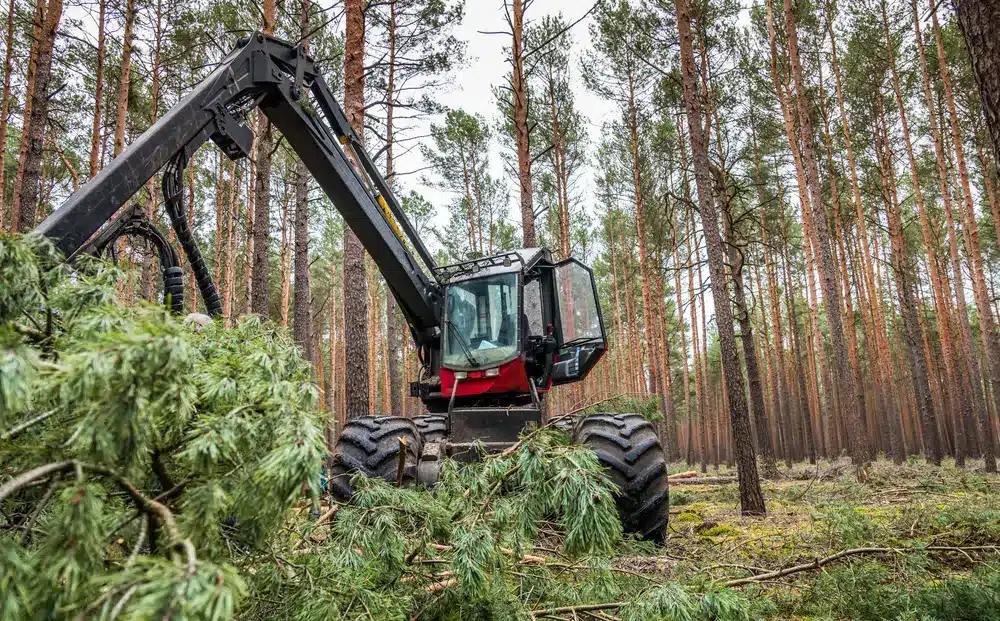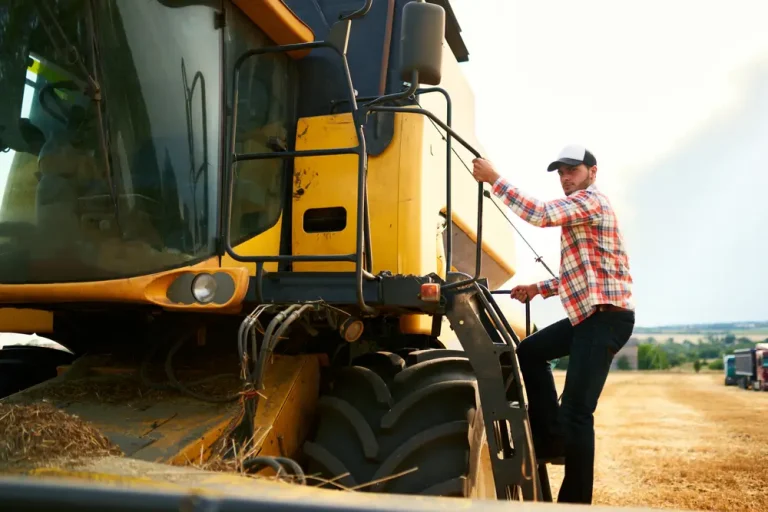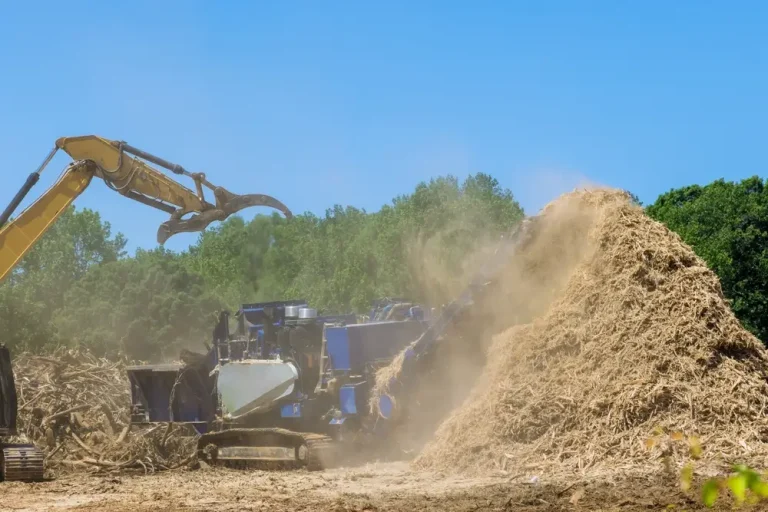Well, in the forests surrounding Toulouse, even a small sign of wear to your forestry mulcher can rapidly snowball into expensive repairs and downtime. Local operators tend to miss the early warning signs specific to Occitanie’s gnarly terrain and thick underbrush. Which is why knowing exactly what to watch for is so important. In this post, we’ll identify Toulouse-specific mulching wear signs, assisting you to maintain your forestry mulcher in optimal condition throughout the year.
What signs of wear to watch for on your forestry mulcher
If you’re in the woods all day, every day, staying on top of maintenance is the best way to get steady, safe work from your mulcher. Keep an eye out for these signs of wear to catch problems before they stall you or cause expensive breakdowns.
- Diminished cutting capacity is a primary indicator. When your mulcher isn’t cutting or shredding wood as quickly or cleanly as it used to, teeth or drum wear could be to blame. Dull, chipped or unbalanced teeth typically cause slow work, larger wood chips or uneven mulch. Daily inspections—particularly of the teeth and drum—catch these early. If you find your mulcher bogs down in thick brush or requires additional passes to clear land, it’s time to look for signs of wear.
- Increased fuel consumption can indicates its parts are worn out. If you notice fuel consumption increasing for an equal size job, check out the teeth, belts and engine. Worn or loose belts make the engine work harder. Clogged air filters or a dirty cooling system damage fuel consumption. Clean or change filters and check coolant levels – particularly in hot months or dusty sites.
- Requiring repairs more frequently suggests more extensive wear. If you’re repairing the same part over and over, whether that’s belts or bearings or hoses, it typically indicates those parts are close to their lifespan. Loose bolts or parts that shake loose after each job require prompt action to prevent larger breakdowns or safety hazards.
A solid service schedule counts. That translates to daily inspections, routine belt tension checks (maintain it in the 13-18 kg range), and mixing up your schedule each season. Pre-winter, inspect fluids and tire pressure, during dry months, clean the cooling system. A set, simple schedule helps keep things running smooth.
Why spotting early wear is so critical
Catching mulcher wear before it becomes a big problem can save a lot of money and hassle. Early warning signs, like dull teeth or loose bolts, can appear after only a few days of hard work. If you catch these issues early, you prevent major failures, such as broken drums or snapped belts. This means you avoid the high repair bills associated with serious damage. It’s way less expensive to replace a worn tooth than to repair a destroyed drum.
Maintaining your mulcher ensures it runs at peak performance. With everything sharp and tight, the mulcher chips clean, fast and even. This is most important when working in dense forests or on rugged inclines. If a component, like a tooth or a bearing, gets worn and you miss it — the entire operation grinds to a halt. Or worse, your machine could give out mid-shift! That results in wasted time and delayed projects. Quick inspections before and after the workday maintain the momentum.
Safety is a major motive for routine inspections. A loose tooth or cracked chain can fly off and injure someone. Operators and workers on the ground can get injured if worn parts fail. Daily inspections assist in ensuring your mulcher operates safely and that all guards and shields are intact.
Frequent inspections and immediate repairs of minor issues keep the mulcher going strong. Properly cared for, these machines can operate for years, providing you additional bang for your buck. Unplanned repairs are expensive, potentially more than half the price of a new machine if you let it go too long. Simple steps like tightening bolts, checking for cracks and looking for leaks keep the mulcher ready for long days.
Key benefits of regular wear inspections
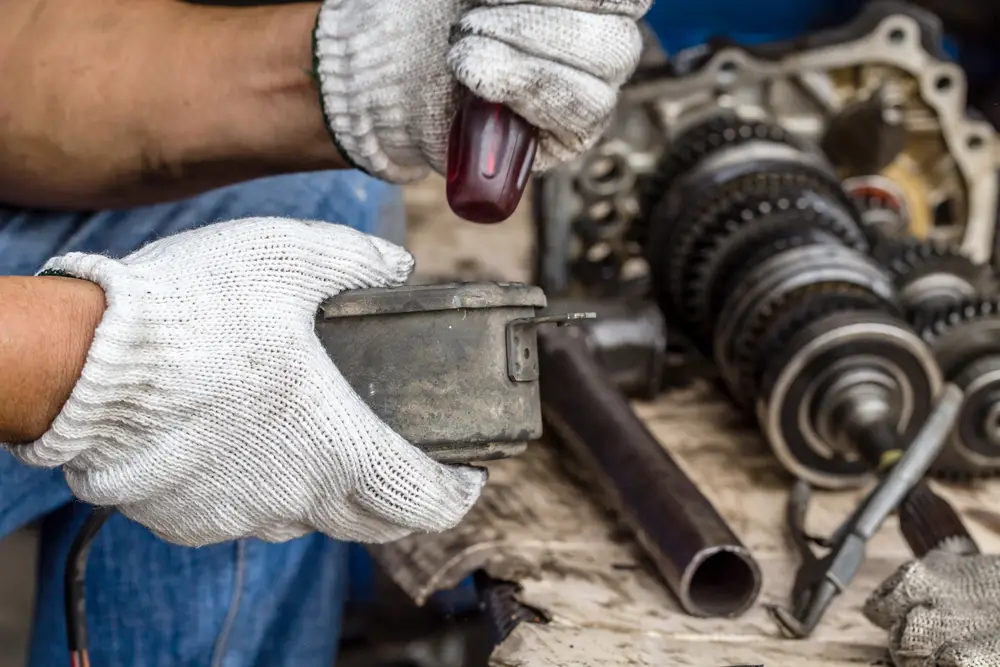
Catching wear on your forestry mulcher isn’t just about repairing what’s broken. It’s about maintaining your equipment so each job is safer, faster and less expensive in the end. Forestry mulchers don’t waste time, from brush clearing to crushing saplings. That’s why parts take a beating, and regular inspections are important. Staying on top of easy stuff such as greasing moving parts or clearing the radiator keeps your mulcher tough and prepared. A schedule for maintenance keeps your mulcher lasting longer and stretching your investment.
Checking for wear frequently helps you catch issues before they become major repairs. If you replace worn teeth or broken belts early, your mulcher chops better and consumes less fuel. Worn teeth make the motor work harder. This means more fuel burned and more stress on other parts. Sharp, solid teeth cut cleaner and faster, providing you with more consistent mulch every time. This translates to reduced downtime and fewer headaches on the job.
A forestry mulcher that is inspected and repaired frequently is far less prone to breaking down in the field. It keeps up with compact schedules and achieves more acreage in less time, sometimes as quick as 1.5 hours or less for a sizeable plot. Good care means you hit your safety marks and shield folks and the ground. Loose bolts or cracked parts can cause accidents, but catching them early keeps everyone safe. Keeping ahead of wear and tear keeps you out of fines or trouble with safety regulations, as well.
Below is a table that shows the main benefits of watching for signs of wear:
| Aspect | Benefit |
| Productivity | Less downtime, faster work, better performance |
| Safety | Fewer accidents, safer for people and land |
| Maintenance | Cheaper fixes, longer lifespan, less fuel used |
Most common types of wear and how to spot them
Forestry mulchers bust their humps in gnarly patches, so you need to catch wear before it cripples a job. Routine inspections assist in maintaining performance and your investment.
Mind the teeth! Broken, chipped, or dull teeth that you could easily miss if you don’t look closely. Plus, sharp, balanced teeth mean better mulch and save you money in the long run, since each one can be expensive—some fetch close to $100 a piece. Worn or missing teeth can result in bigger debris pieces, so inspect all teeth and the drum after every use, particularly if you operate the machine for extended hours.
Pay attention to strange noises. Heavier noise or clatter than normal indicates loose or worn components. Excessive vibration tends to signal that either the drum or teeth are out of balance. If your mulcher feels rough or shakes more than usual, pause and inspect for loose bolts, missing teeth, or cracks in the drum. These indicators appear earliest in units operated near the upper 50% of their respective flow rating.
See how it operates. Slower mulching speeds – a red flag. If the mulch isn’t smooth or you find big hunks, it may be worn teeth or a crooked drum. These problems can signal more severe issues, such as low hydraulic flow or worn bearings.
Keep tabs on repairs. Having to pull over more to make repairs or adjustments is a sign that wear is accumulating. More frequent fixes indicate components are nearing replacement. Daily schedule of inspections and light maintenance should catch minor issues before they become major. If you don’t, costs and downtime spiraled far worse in later years.
Best practices to detect wear before failure
Forestry mulchers beat themselves against stumps and rocks, so spotting early signs of wear matters for safety and machine life. Inspect the teeth and cutting components prior to every use. Dull or chipped teeth cut slow and strain the engine, whereas missing or bent teeth can throw off the balance and damage output. If you notice cracks or shiny wear spots on the screens or hammers, replace them immediately to maintain an efficient and safe operation.
Maintain a log for each machine. Record each inspection, component replacement and strange noise. This allows you to catch wear patterns and schedule repairs before equipment falls apart. A checklist simplifies the task. Key steps include inspecting all bolts and fasteners, inspecting the bearings for additional play or heat, and inspecting for any fluid leaks under the mulcher. Keep an eye on the hydraulic lines and fittings for wet spots—fluid leaks translate to less power and fire hazard. Inspect the engine oil and air filters, as well, since clogged filters or dirty coolers can overheat the engine.
Operators require solid instruction. They’re the ones who should know what worn teeth, weird noises, and leaks look like. If anything feels strange, notify immediately. This prevents minor problems from mushrooming into catastrophic breakdowns. Bystanders must remain 90m (300ft) from the work site as a precaution.
Mulchers are most efficient when not overburdened. Pushing too hard on thick or tough material will wear parts fast and bog down the motor. Stay within what the mulcher is designed for and adhere to the manufacturer’s guidelines. Flush the cooling system and air filters after every use to prevent dirt accumulation and keep everything running cool.
Mistakes to avoid when checking for signs of wear
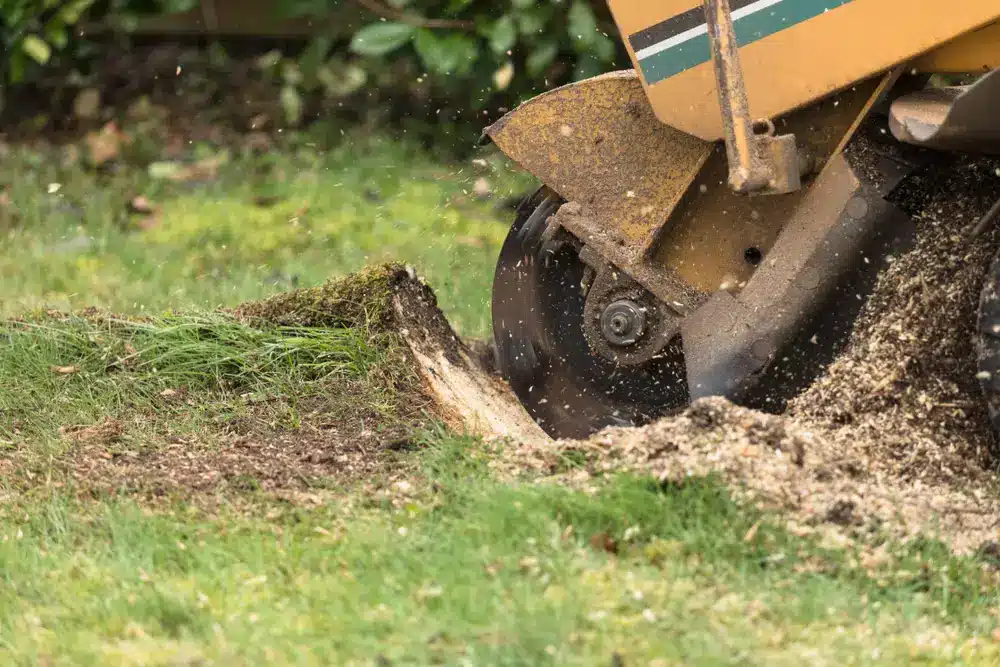
These are the most common forestry mulcher signs of wear watching to avoid missing. Common mistake #1: overlooking subtle changes, such as dulled or chipped teeth. Once teeth become blunt, they don’t simply reduce cutting speed. They can damage the tool holder and unbalance the drum. Inspecting teeth daily aids in identifying damage early. Others attempt to cut costs with “will-fit” teeth. While these might fit initially, they don’t always suit the machine’s requirements, causing uneven wear or more breakdowns.
Putting that mulcher to work faster and clearing more land than you really should, puts extra stress on the mulcher. Overloading causes early wear on parts, particularly if the operator bails on daily inspections. Watch out for indicators such as strange noises or emerging vibration, these typically indicate loose bolts, worn bearings or drum imbalance. Unchecked, little things snowball into big, costly problems.
One of the best ways to avoid downtime is a regular maintenance schedule. Quick inspections each day should look for loose parts, check belt tension (pull with 14–18 kg of force) and make sure the drum and teeth are sharp and balanced. Schedule a comprehensive inspection at the end of every season—swap out worn components, deep clean the unit, and record all repairs.
Good record keeping is commonly overlooked. Missing this step causes difficulty identifying patterns, such as repeated breakdowns or missed maintenance. Recording what you observe each day assists in identifying issues early and maintains repairs on course.
Common mistakes to avoid:
- Skipping daily checks on key parts
- Ignoring odd sounds or vibration
- Using non-matching replacement teeth
- Overloading the mulcher
- Not keeping maintenance records
- Failing to follow a set maintenance schedule
How to measure maintenance success on your mulcher
Knowing how to measure wear on your forestry mulcher is key if you want it to last. Begin by giving a daily once-over to the fundamentals. In rough spots—like steep hills or thick woods—mulchers need even more care. Be sure to check the belt tension with a 13–18 kg pull. If it’s loose or slips, time to mend. Old machines tend to have oil leaks or require hydraulic repairs every few months. These fixes are expensive and work-slowing. Today’s mulchers assist with built-in shields, guards and sensors to keep you safe and your work easier.
Watch the condition of your mulch. Once you’ve repaired or replaced worn components, the mulch should appear uniform and fine, not patchy. If it’s still uneven, see if the teeth or hammers are worn. Downtime tracking counts as well. Once you begin regular inspection, you’ll find less time lost to unexpected breakdowns. Repairs should plummet if you catch little issues early. If you want proof, compare key numbers before and after you start regular care:
| Metric | Before Wear Checks | After Wear Checks |
| Mulch Quality Score | 5/10 | 9/10 |
| Downtime (hours/month) | 15 | 4 |
| Repairs Needed | 6 | 2 |
| Productivity (tons/day) | 8 | 12 |
By following these figures you’ll have more work accomplished with less hassles. Watch how much more quickly you complete jobs and how often you pause for repairs. With consistent maintenance, you’ll experience finer mulch, less repairs, and more productivity. These signs indicate that your mulcher is working properly.
